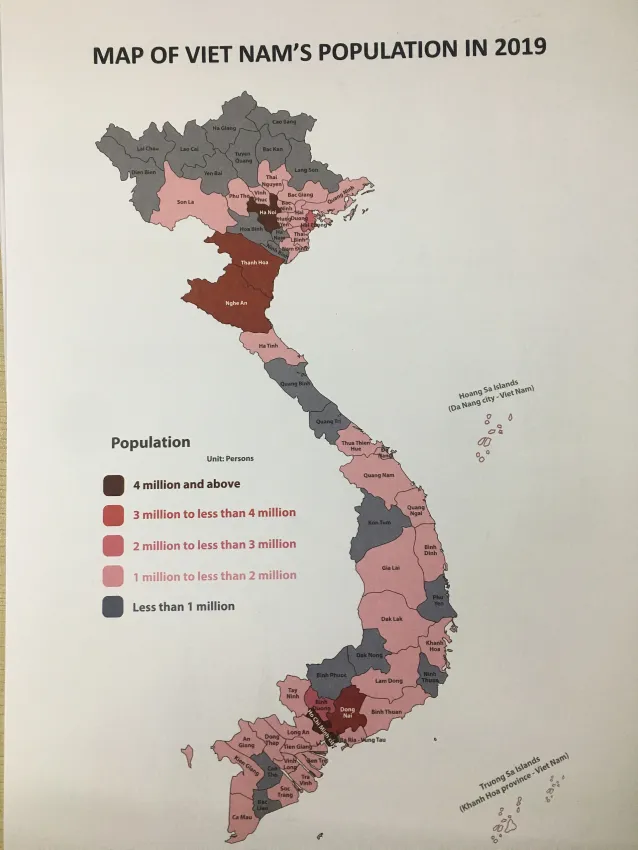Vietnam's population set to reach 104 million by 2030
Vietnam currently ranks the 15th most populous country in the world and the third most populous one in Southeast Asia.
The Vietnamese population is projected to reach 104 million by 2030, with an average lifespan of 75 years and healthy life expectancy at birth of 68 years, VnExpress reported.
According to the Vietnam Population Strategy to 2030 on November 22, the government sets target to maintain the replacement fertility rate of 2.1 children per woman and reduce the fertility gap between regions.
| Vietnam’s population reached 96.2 million April 2019. Souce: Vietnam Population and Housing Census |
Vietnam will bring the sex ratio at birth to the natural balance, maintain a reasonable age structure. Specifically, the percentage of children under 15 will reach 22%, the percentage of people aged 65 and older will reach 11%, the dependency ratio will account for 49% of the national population.
The government expects that by 2030, the average people’s height will be 168.5 cm for men and 157.5 cm for women and Human Development Index (HDI) will be among the top four highest among Southeast Asian countries.
To achieve the above-mentioned goals, the government will increase spending and mobilize other sources of capital for the population work. The insurance market will be facilitated with different packages which are suitable for different groups of residents and ensure that everyone is covered by welfare and social security services.
According to a report on the 2019 Vietnam Population and Housing Census, the total population of Vietnam as of April 1 was 96.2 million, enabling Vietnam to be the 15th most populous country in the world and the third in Southeast Asia, after Indonesia and the Philippines.
Compared to 2009, Vietnam’s ranking in Southeast Asia has not changed, though it fell two positions in the worldwide rankings, the report said, adding that the average annual population growth rate in 2009-2019 was 1.14%, a slight decline compared to the previous ten years (1.18%).
The results of the 2019 census revealed that Vietnam's population density is currently 290 persons per square kilometer, an increase of 31 persons per square kilometer compared to 2009. Hanoi and Ho Chi Minh City have the highest population density in the country, with 2,398 and 4,363 persons per square kilometer, respectively. Thus, Vietnam is one of the most densely populated countries regionally and worldwide.











